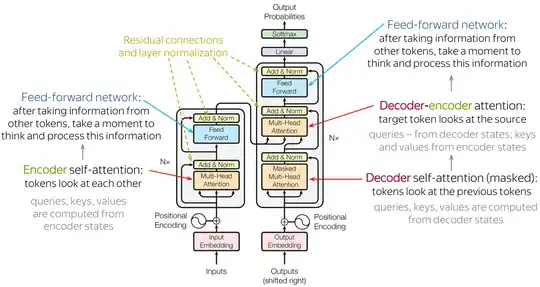In PyTorch, transformer (BERT) models have an intermediate dense layer in between attention and output layers whereas the BERT and Transformer papers just mention the attention connected directly to output fully connected layer for the encoder just after adding the residual connection.
Why is there an intermediate layer within an encoder block?
For example,
encoder.layer.11.attention.self.query.weight
encoder.layer.11.attention.self.query.bias
encoder.layer.11.attention.self.key.weight
encoder.layer.11.attention.self.key.bias
encoder.layer.11.attention.self.value.weight
encoder.layer.11.attention.self.value.bias
encoder.layer.11.attention.output.dense.weight
encoder.layer.11.attention.output.dense.bias
encoder.layer.11.attention.output.LayerNorm.weight
encoder.layer.11.attention.output.LayerNorm.bias
encoder.layer.11.intermediate.dense.weight
encoder.layer.11.intermediate.dense.bias
encoder.layer.11.output.dense.weight
encoder.layer.11.output.dense.bias
encoder.layer.11.output.LayerNorm.weight
encoder.layer.11.output.LayerNorm.bias
I am confused by this third (intermediate dense layer) in between attention output and encoder output dense layers
